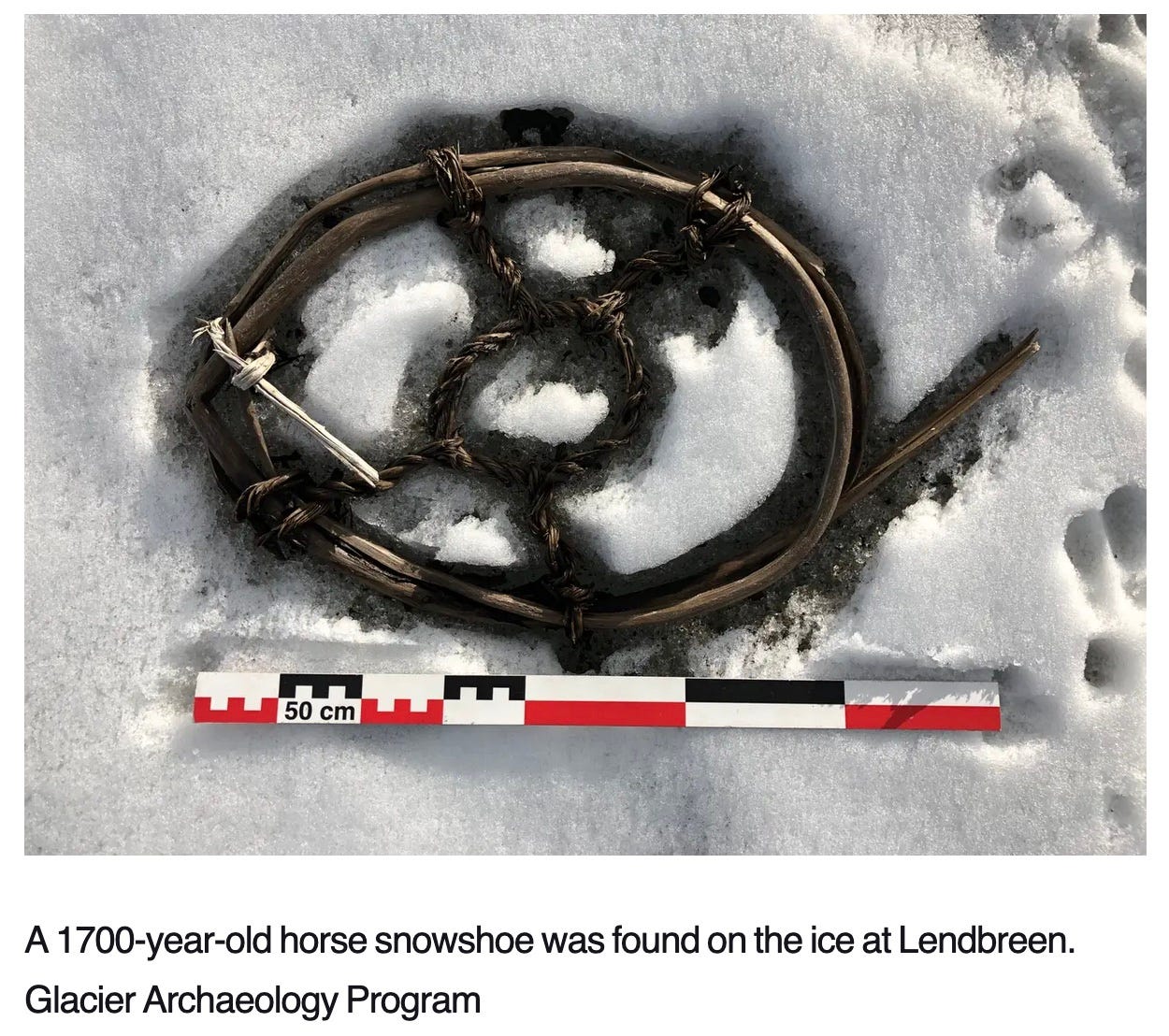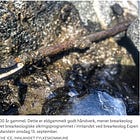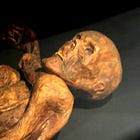Frontiers of Glacier Archaeology: More Evidence of Intensive Alpine Land-Use until 500 Years Ago
Norway's glacier archaeologists had a tremendously successful summer 2024, and they continue to find more evidence of regular human use of high elevations until the Little Ice Age
What happens when the glaciers are melting?
Archaeologists are finding so many cool artefacts, it boggles their minds.
Every now and then, I’m bringing you updates from Norway’s intrepid glacier archaeologists, and this day is as good as any to to so.
Today’s posting is a ‘best of’ a piece that appeared in Business Insider two days ago, and it’s about the astounding findings made by Norwegian researchers of the ‘Secrets of the Ice’ group.
They also have a Facebook page, which I can only recommend (it’s the source of the below quote):
Norway’s melting glaciers continue to reveal incredible glimpses into the past! This new article from Business Insider showcases some of the remarkable artifacts we’ve uncovered—preserved for centuries in the ice. From ancient arrows to everyday tools, these finds are rewriting history and offering unique insights into the lives of those who once traversed these frozen landscapes.
Check out the full story and stunning photos in the link below.
And off we go, shall we? (Emphases and [snark] mine.)
Archaeologists are Ffinding Mysterious Ancient Objects on Norway’s Melting Glaciers. Take a Look
By Morgan McFall-Johnsen, Business Insider, 25 Feb. 2025 [source]
Mysterious and fascinating artifacts are surfacing on melting glaciers across the planet.
From strange wooden tools and statues to ancient human remains, these objects are drawing archaeologists into the high, frozen mountains each year.
Norway is at the forefront of this emerging field of research, called glacial archaeology. With about 4,500 artifacts discovered, the country claims more than half of the planet's glacial archaeology findings, according to Espen Finstad, who co-leads the Norwegian program, called Secrets of the Ice.
Archaeologists there are piecing together clues about ancient industries and trade routes across the glaciers.
They just had one of their best field seasons yet. Here’s what they found.
People have trekked over Norway’s glaciers for thousands of years to sell and buy goods.
Ancient hunting, travel, and trade routes crossed the mountains between the Norwegian coast and inland areas from the Stone Age.
‘We are lucky that some of these trade routes have gone over ice’, Finstad told Business Insider.
Objects that ancient travelers left behind were frozen in the ice for centuries — until recent decades.
As humans have burned fossil fuels for energy, releasing heat-trapping gases into the atmosphere, global temperatures have been rising for decades. Glaciers everywhere are melting, releasing the ancient artifacts preserved inside them [this is the unavoidable BS here—the Alps were ice-free 3,350 years ago: imagine the amounts of fossil fuels our stone-age ancestors were burning each day…].
‘There are so many treasures in the ice there’, Finstad said.
Lendbreen was a common travel route during the Viking and medieval eras [which means there was less ice there a 1000 years ago, i.e., it was warmer back then] The archaeologists go there almost every year.
In the summer of 2024, heavy melting meant lots of new discoveries.
‘The melting really came rapidly at the end of the season’, Finstad said.
Finstad’s team of about seven archaeologists visited nearly a dozen sites across the mountains to search for artifacts.
At Lendbreen, they used pack horses to bring gear up to the site and set up their camp.
They stayed there about nine days, Finstad said.
Their findings included ‘two of the best-preserved arrows we ever found’, Finstad said.
One of them was just lying on top of the ice, waiting to be found. Usually there’s a little excavation involved, but the archaeologists simply picked this arrow up.
‘It’s very seldom to find them that well preserved on the ice. So it was kind of a gift. It was very beautiful’, Finstad said.
Arrows are abundant in the glaciers because reindeer hunting was ‘almost like an industry’ in the Iron Age and medieval era, Finstad said.
People hunted for their own food, of course, but also to sell in a market.
Arrows can hold clues about past societies.
For example, some arrowheads found on the glaciers have tips made from river mussels that must have come from far away, cluing researchers in to just how far people were traveling and trading over the ages.
Some of the prehistoric arrows Finstad’s team found last season were so well-preserved they still had fletching.
Fletching is delicate and doesn’t usually last thousands of years. These were rare findings.
Some items they find are just ‘strange’, Finstad said.
Small bits of wood, leather, and textile are often impossible to identify.
Finstad estimated they’d found about 50 small, mysterious objects at Lendbreen in 2024.
‘It's all kind of small things, daily life things from the Viking Age or older, which you don’t find in other archaeology contexts, at least in Norway, because it's gone. It degrades’, Finstad said.
Heavy snow cut off the archaeologists’ efforts—but now they know where to look this summer.
‘We are excited to go back’, Finstad said.
Bottom Lines
I’ve reported on archaeologists literally stumbling across cool artefacts the moment they reach the ice patches:
Melting glaciers reveal stunning levels of high-altitude life, which is very much in line with the mediaeval warm period (which the IPCC dislikes).
Moreover, the glacier archaeologists have now found comparable artefacts and evidence of near-permanent human land-use high up in the mountains virtually all across Europe, including the Alps:
Basically, due to warmer temperatures, people regularly used these elevations for whatever purposes, and the many artefacts are telling a peculiar story: there was less ice that high up until the Little Ice Age—which is an inconvenient fact that raises several questions about anthropogenic climate change.
We saw lip-service to these notions in the above-related piece, but it’s safe to assume that these research findings will eventually trickle down to the general public.
None of the fossil fuel-induced heating of the planet makes a lot of sense in the context of these findings.
It was warmer 3,350 years ago, so much so that the Alps were essentially ice-free, according to the peer-reviewed literature published in Nature:
Square that with the climate doom spin, if you’d please.
I’m waiting for a plausible argument. Don’t worry, take your time.










Thanks for this as it’s quite interesting. I just realised how much of my Substack feed is doom and gloom. This was a nice change. I often wonder the kinds of lives our ancestors lived. Despite their hardships I doubt they were as depressed as our current civilisation.
As a history enjoyer, these articles really hit the spot - thank you. Horse snowshoes wow. I learned something new!